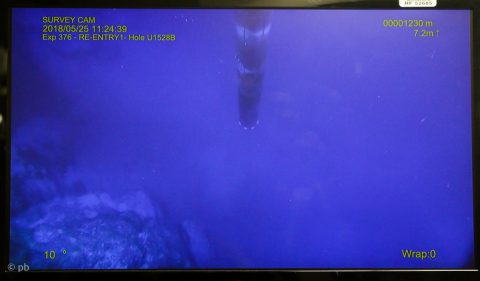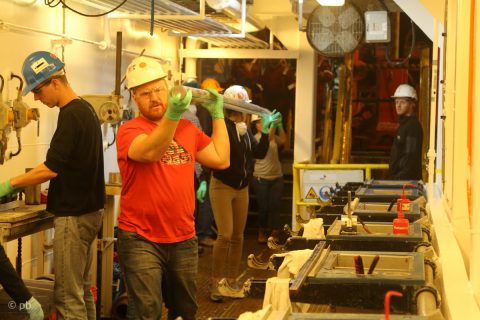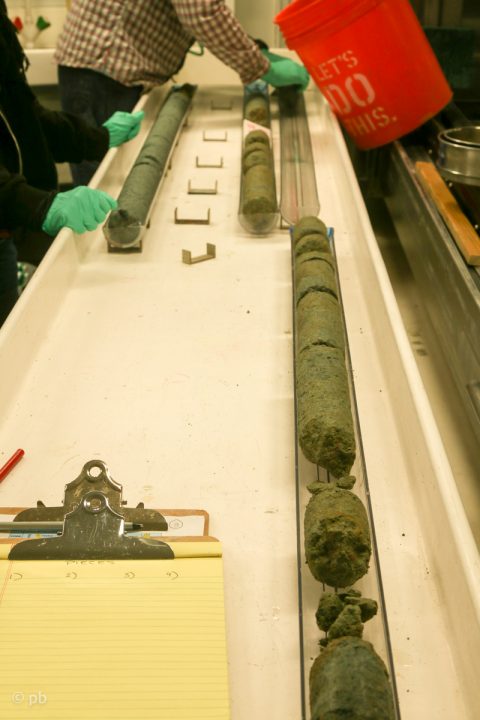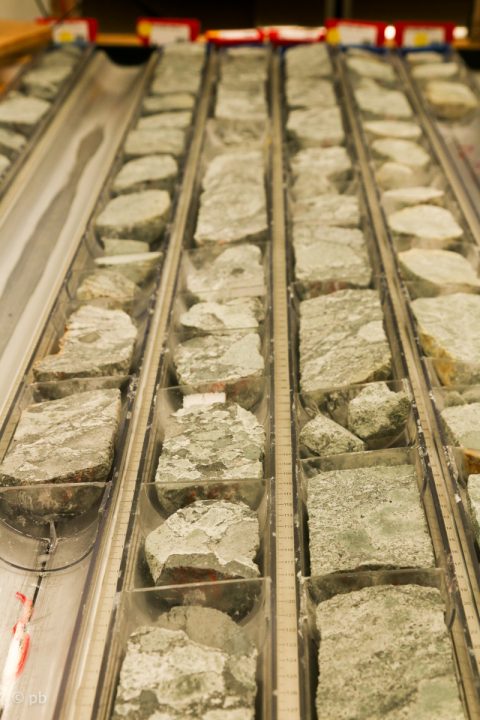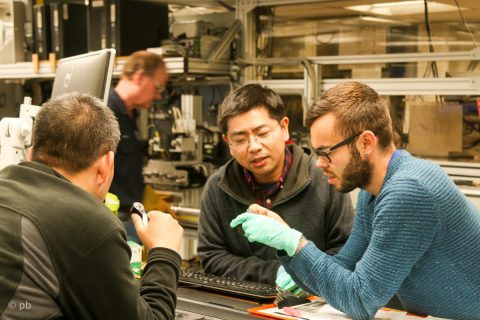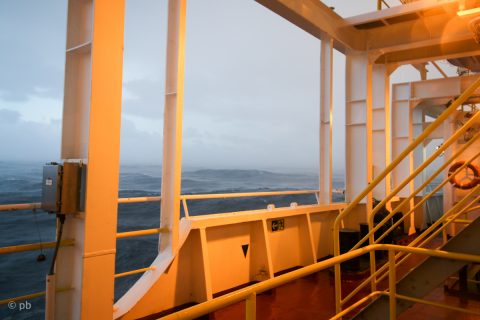May 27, 2018
Latitude: 34° 52.52’S
Longitude: 179°03.52’E
Days at sea: 19
Let’s follow a core that gets on deck of the JOIDES Resolution. It has to endure a lot of procedures before it is allowed to relax in its d-tube, where it waits for shipping to the storage facility in Japan. After the core was retrieved, it is brought into the core splitting room. The first scientists that get their hands on the rocks are microbiologists, who take whole-round samples of the core in which they are looking for microbial life. When the splitting room looks like an operating theatre – because everyone wears gloves and masks – you know that the contamination-phobic microbiologists are around! Several measurements for physical properties are then performed on the core before it is cut in two halves: the archive half, which remains untouched and is the basis for our rock descriptions, and the working half, which is used for scientific sampling. To ensure that all interesting features such fractures and veins are preserved in both halves of the cores, a structural geologist and a petrologist mark the cutting line together. More measurements, for example tests regarding the magnetic properties of the rocks, are performed before, finally, the core describers get to see their cores. Philipp and I are both part of this big group, which probably looks at the rocks closer and longer than any other shipboard scientist. We divide the core into different units and describe its textures, minerals, grain sizes, colours, and anything else we may find.
You might think we then leave the core be – but no! We have regular “shipboard sampling parties”, in which the working half of the core is sampled for various measurements that can be performed on board, for example chemical analyses that reveal the rock’s compositions. The core describers also get more subjects to describe: so-called thin sections are made by polishing a piece of rock down to a thickness of less than 0.03 mm, which allows us to study the rock under the microscope with transmitted light. Thereby, we can find even more details that help us to better understand what Brothers Volcano is made of.
This past week, we spent a lot of our time studying thin sections from our first drilling site. Combined with our macroscopic observations, they provided us with first ideas about the origin of the formations that we drilled – but also with a lot of questions! Of course, these questions are what we came here for and we will try to answer them in the coming weeks and through our post-cruise research at home. Meanwhile, we started to get first cores of our second drilling site…
…stay tuned to find out about successes and problems at our second site, why we are currently already drilling at our third site, and what “wowing” means!
KS
